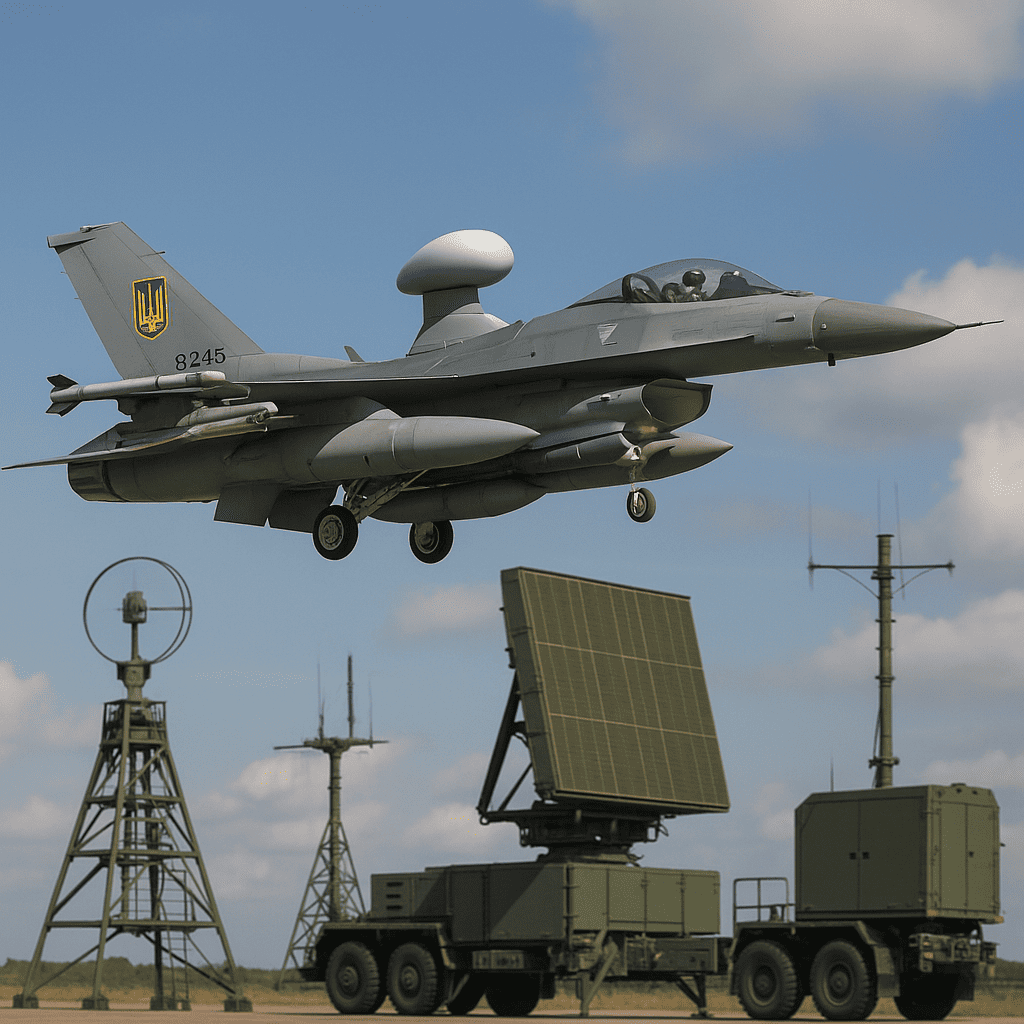
Last week, Ukrainian Deputy Defense Minister Kateryna Chornogorenko signed an agreement on the use of the Link-16 protocol in the Armed Forces of Ukraine. Ukrainian aircraft will now be equipped with NATO communication and control systems. They will be able to operate jointly with Western air defense systems, which have long been in service with the Armed Forces of Ukraine. This is a reliable, modern communications system that will effectively integrate the command and control of the Ukrainian army and NATO forces. At least in the future, this prospect is realistic.
But once again, I note that much more modern, cheaper, and reliable civilian technologies are entering the arena, which military scientists and designers cannot compete with. This year, news emerged that Apple and SpaceX are already testing signal transmission between iPhones and satellites. Direct communication from ordinary smartphones via civilian satellites is being studied at a very advanced stage of R&D in several campaigns. Among them are both recognized leaders and startups. It is not yet known which of them will be the first to offer the service commercially.
But if in the coming years the military will be able to establish reliable communication from anywhere on the planet using a simple smartphone, they will start using proven programs that have long been part of their practice on the front lines. These include messengers, mapping services, and much more. It is not difficult to predict communication between crews, radars, and command via civilian channels.
Direct communication between smartphones via civilian satellites will give the military unprecedented opportunities. And a whole segment of top-secret military technologies, which defense industry corporations are proud of, will become a thing of the past. Everything will become significantly cheaper, simpler, and will change in market competition without the prodding of generals.
This seems like science fiction today, but who would have thought a few years ago that Elon Musk’s Starlink would provide stable control of an entire huge army? After all, it was not created for this purpose, only recently. Now, no one in the Armed Forces of Ukraine wants to give up Starlink; they even call its possible shutdown a disaster. No one will give up the Link-16 protocol either. But if civilian services prove to be simpler, more functional, and more reliable, then NATO will gradually stop using this “military Wi-Fi.”









This article highlights an important shift in military communications technology. It’s interesting to see how civilian innovations like satellite-enabled smartphones could transform traditional defense systems. The integration of Link-16 with Ukrainian forces is a crucial step now, but the future might really belong to more accessible and flexible solutions coming from the commercial sector.
This article really opens my eyes to how fast technology is changing the way military communication works. The idea that regular smartphones could soon connect directly through satellites to support missions sounds like something out of a futuristic movie, but it makes so much sense and could really transform everything. It’s fascinating to think about how traditional, expensive military systems might be replaced by simpler, more accessible tech that anyone can use. The impact on strategy and coordination on the battlefield must be huge, and it’s exciting to imagine what the future holds for both armed forces and civilians alike 🚀
This is a fascinating glimpse into how rapidly military communication is evolving. It’s impressive to see how civilian technology, like smartphones and satellite links, might soon outperform traditional military systems and change the way armed forces coordinate in real-time. The idea that something as common as a smartphone could become a vital tool on the battlefield really shows how intertwined our everyday tech is becoming with defense strategies. The future of communication in warfare seems both exciting and a bit surreal. 🚀
It’s amusing how the article praises the military for finally adopting some outdated communication tech while simultaneously admitting that civilian tech, like Apple’s and SpaceX’s satellite links, will render it obsolete soon enough. So the army spends billions on fancy protocols that are already on their way out just because they’ve been around for a while? Sounds like a classic example of throwing money at problems while ignoring simpler, cheaper solutions staring them in the face. If only generals were as quick to adapt as startups and tech giants, maybe we wouldn’t be stuck in this expensive communication dinosaur era.
This shift towards integrating civilian satellite tech with military communications sounds like a game changer. The idea that everyday smartphones could soon connect directly to satellites for secure military use blurs the line between consumer tech and defense in a fascinating way 🚀
It’s fascinating to see how quickly civilian technology is influencing military communications. The idea that everyday smartphones could soon connect directly through satellites to support complex operations sounds like something from a futuristic novel. It makes you realize how traditional military systems might become outdated faster than expected, and how innovation doesn’t always come from the defense industry alone. The comparison with Starlink really shows how these new tools can reshape strategies on the ground. It raises important questions about security and control, but also offers hope for more accessible and adaptable solutions in the future.
This is such a fascinating and forward-looking perspective! It’s incredible to think how civilian tech is rapidly outpacing specialized military systems. The idea of a soldier using a standard smartphone for secure, satellite-based communication was unthinkable not long ago, yet here we are. It really makes you optimistic about a future where advanced, life-saving technology is more accessible and affordable. The pace of innovation is truly inspiring! 🚀
It’s fascinating how the line between civilian and military tech continues to blur. This piece really highlights a deeper truth about innovation: it rarely comes from where you expect it. The most profound shifts often emerge from the commercial sphere, driven by market competition and consumer demand, not by direct military R&D. The idea that a simple smartphone could one day eclipse billions spent on classified systems is a powerful reminder that elegance and simplicity usually win. This isn’t just about technology; it’s a philosophical lesson in humility and adaptation. The future belongs to the agile, not just the strong. 🚀
Link-16 adoption is a necessary move for secure interoperability and hardened command and control, but rapid civilian satellite innovations will reshape the battlefield. Civilian links offer cost and flexibility advantages, yet encryption, resilience, and supply chain controls mean hybrid solutions combining military and commercial systems are the realistic path forward.
I can see civilian satellites and smartphones transforming military comms—cheaper and flexible, but security and control will be the big challenges 🤔
Military shift to civilian satellite links makes sense—cheaper, faster, and widely available. Biggest hurdles will be security and integration, but this could really reshape modern warfare 🚀
Civilian satellite links could really simplify military comms and cut costs.
As a man, I see liberty and danger entwined; tech rewrites our trust 🌍📡🤔🔗
Generals clinging to Link-16 like it’s a vintage watch while civilians already build global smartphone networks. Wait till phones do the job and military Wi-Fi becomes museum exhibit. Classic budget panic incoming 😂🤦♂️
The future of military communication looks bright with civilian tech 📱✨ unlocking new possibilities 🌍🚀
So the military might soon ditch their high-priced secret tech for everyday smartphones linked to civilian satellites? 🚀📱 That would turn the whole defense industry upside down and blow the doors wide open for private companies to dominate—a disruptive future or a security nightmare? 🔥🤔